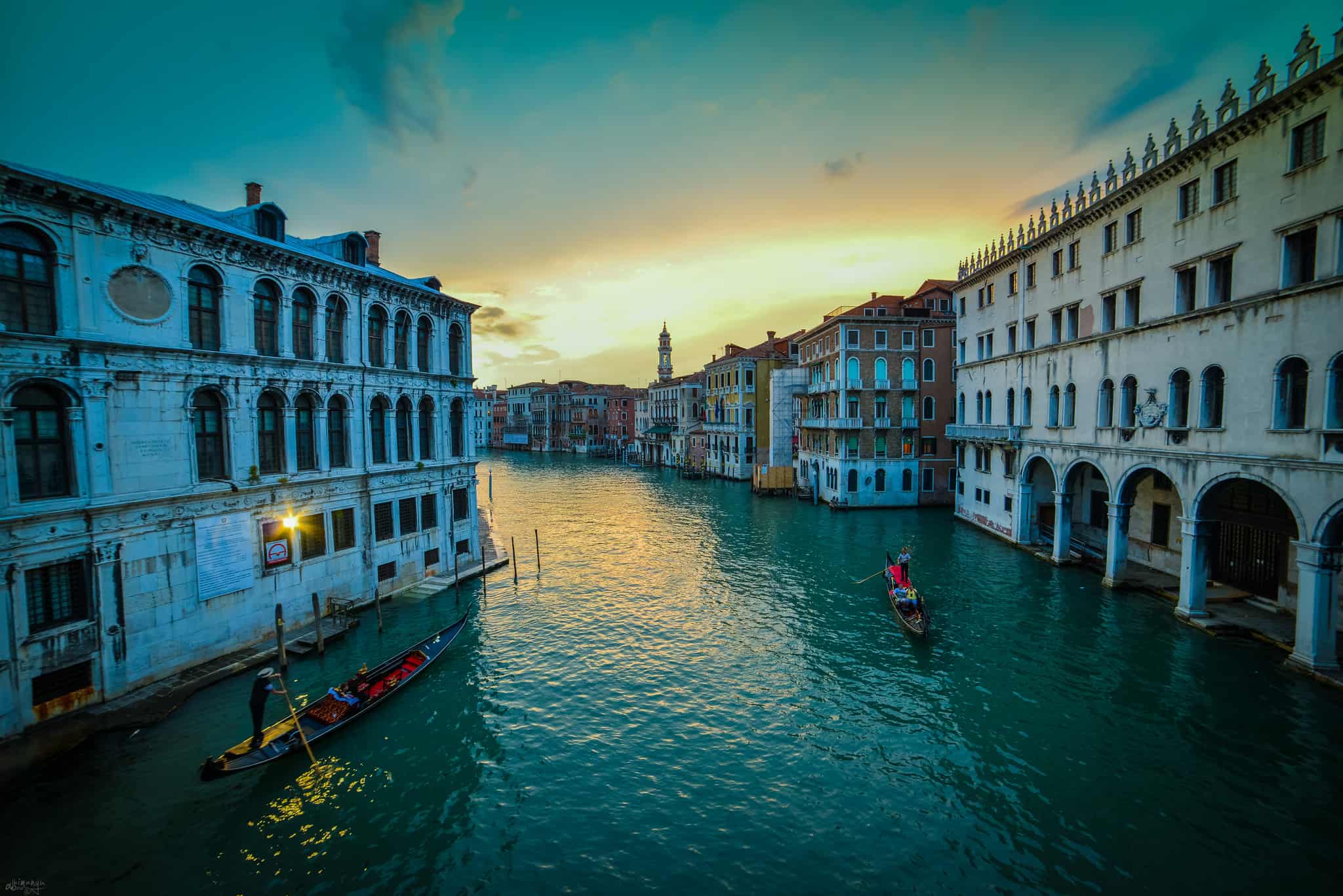It’s one of the most romantic cities in Europe and filled with incredible art, architecture and expensive shops. While you could spend a fortune in Venice, you can also have a great time and spend almost nothing. Leave the credit cards in your wallet and check out some of these sights that are no less incredible just because they’re free.
Piazza San Marco
 https://www.flickr.com/photos/fotodispalle/
https://www.flickr.com/photos/fotodispalle/
St. Mark’s Square is the place to go in Venice and the starting point for most adventures. From here you can get to the canals, great art, super-touristy coffee shops and amazing people-watching. Check out the two marble lions at the north end look up to see the clock tower that has stood there since 1499. Check out the shops in the arcade that lines the square and check out the Campanile of St. Mark’s Basilica that is one of the most recognized sites in the city.
St. Mark’s Basilica
It dominates the eastern side of the square and is elaborately ornate with the western wall being covered in marble and the door surrounded with Romanesque carvings. The four horses along the top symbolize the power of Venice. There are so many symbolic statues on the exterior that enthusiasts could spend a week exploring them all. The interior of the church is free to enter and has decorative marble floor and mosaics in the upper levels. The gold altarpiece is beautifully worked and decorated with embedded gems. Some of the small museums inside the church have a fee but there is a lot to see in the main section.
Rialto Bridge and Market
 https://www.flickr.com/photos/37034324@N05/
https://www.flickr.com/photos/37034324@N05/
Four bridges span the Grand Canal and Rialto is both the oldest and once marked the division of districts. The current bridge was built in 1591 and replaced wooden structures that collapsed under the weight of foot traffic. The Market on one side of the bridge has been a part of the crossing since 1181 when the crossing was a pontoon bridge. The market is also an excellent place to get fresh fish and vegetables at a good price.
San Giorgio dei Greci
It wasn’t until almost 1500 AD when the Greek Orthodox rite was permitted in Venice and construction on the church was started 50 years later. It’s one of the world’s best examples of an Orthodox temple and the interior has some beautiful artwork inside. Have a look at the bell tower while you’re outside and you’ll see it has a noticeable lean to it although it appears to be righting itself slowly.
The Jewish Ghetto
 https://www.flickr.com/photos/vgm8383/
https://www.flickr.com/photos/vgm8383/
As was the case in many European cities, the Jewish population was confined to a separate section of the city with many restrictions on houses and shops. This particular region is the source of the word “ghetto” that has come to define a rundown area with very poor living conditions. The Venetian Ghetto has five synagogues that were used by separate nationalities with one private synagogue built by four families. It’s an interesting walk through history and the modern shops in historic building are often labeled in Hebrew and serve the Jewish community that still live there.
The Campos
Only St. Mark’s Piazza is given the title of “square”; the rest are campi, or “fields”. Each has its own character and is used by the district as a neighborhood centre. Campo Santa Margherita is lined with shops and is a delightful spot to visit. A vegetable market is active during the day and if you arrive early you can purchase fresh fish. Campo Santa Maria Formosa is one of the largest and has a variety of architectural styles featured in the palazzi that line the square.
The Canals
 https://www.flickr.com/photos/efilpera/
https://www.flickr.com/photos/efilpera/
Just as a city as streets of all sizes, the canals of Venice range from the 30-90 m wide Grand Canal to others that are little more than tiny alleys. Every canal is lined with mansions, shops, architectural art pieces and multicoulored houses. Getting lost in Venice is to be expected but the city is an island and anyone can easily direct you back to the Piazza. To travel the canals, skip the gondoliers and take a vaporetto. These water-buses are reasonably priced and a fun way to see the city from the water – just remember to check the number as several vaporetti usually use the same stop.
The Churches
Most visitors see the big-name churches but Venice has smaller churches on almost every canal corner. Many have paintings by renaissance artists and here and there you’ll find a lesser work by one of the Italian Masters. There other surprises as well such as San Giovanni in Bragora was where Vivaldi went to church and they have a copy of his baptismal record. The churches are free to enter; just be respectful and consider dropping something into the donation box.


